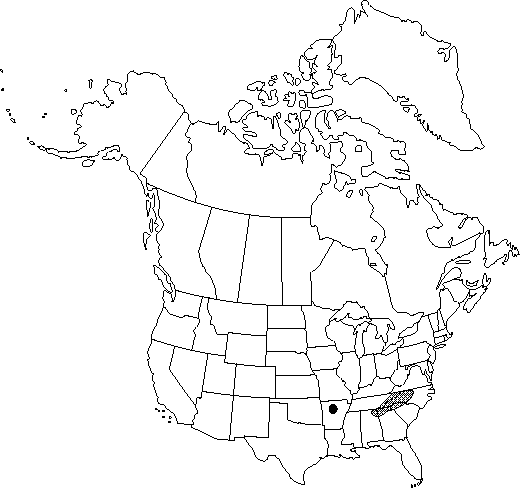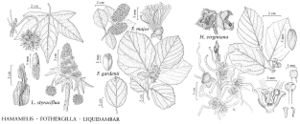Fothergilla major
Bot. Cab. 16: plate 1520. 1829.
Shrubs, 7-65 dm; branches robust. Leaves: stipules 2.8-7 (-10.2) mm; petioles 3-10 (-18) mm. Leaf-blade broadly elliptic or somewhat orbiculate to obovate, asymmetric, 2.5-13.5 × 4.2-12.5 cm, base rounded to truncate, rarely cuneate, often oblique, proximal margins entire, distal margins coarsely sinuate to repand, rarely entire, apex short-acuminate to rounded and mucronate; surfaces abaxially glaucous or green, adaxially green, both surfaces stellate-pubescent or nearly glabrous; veins (4-) 5-6 (-7) pairs. Inflorescences nearly sessile to short-pedunculate, 3-6 × 2-3 cm. Flowers: calyx lobes persistent in fruit; stamens (10-) 22-34; filaments 6-17 mm. Fruiting spikes 3.5-7 × 1.5-2.5 cm. Capsules 5.5-13 mm. Seeds 5-6 (-8) mm, apex pointed. 2n = 72.
Phenology: Flowering spring (Apr–May).
Habitat: Bluffs, dry rocky woodlands, talus slopes, riverbanks, upper piedmont to mountains
Elevation: 150-1300 m
Distribution

Ala., Ark., Ga., N.C., S.C., Tenn.
Discussion
The disjunct occurrence of Fothergilla major in Arkansas is a recent discovery.
Selected References
None.
Lower Taxa
"longest" is not a number.
